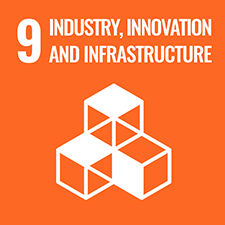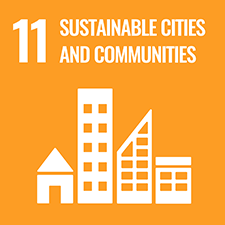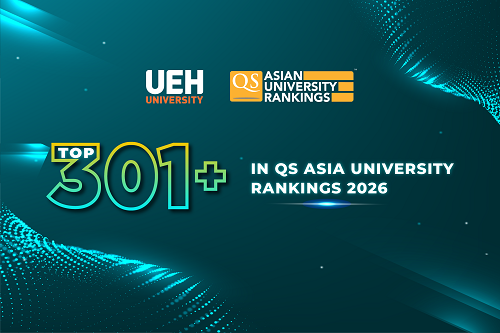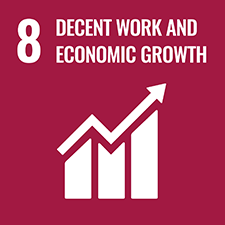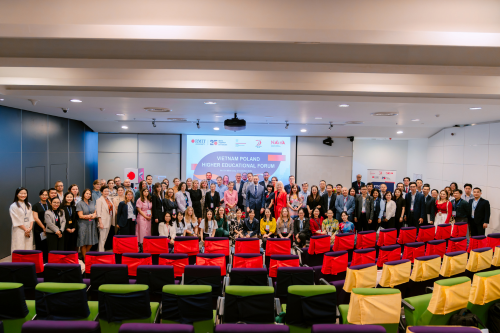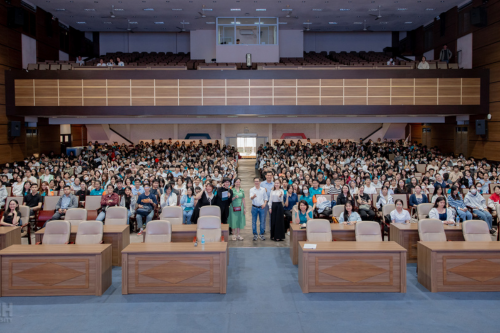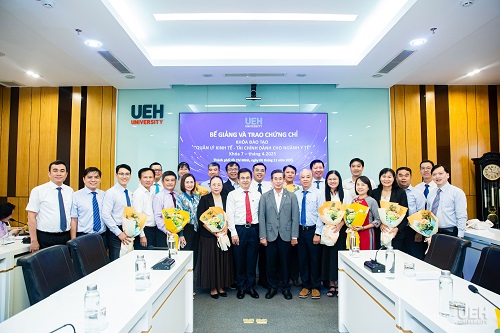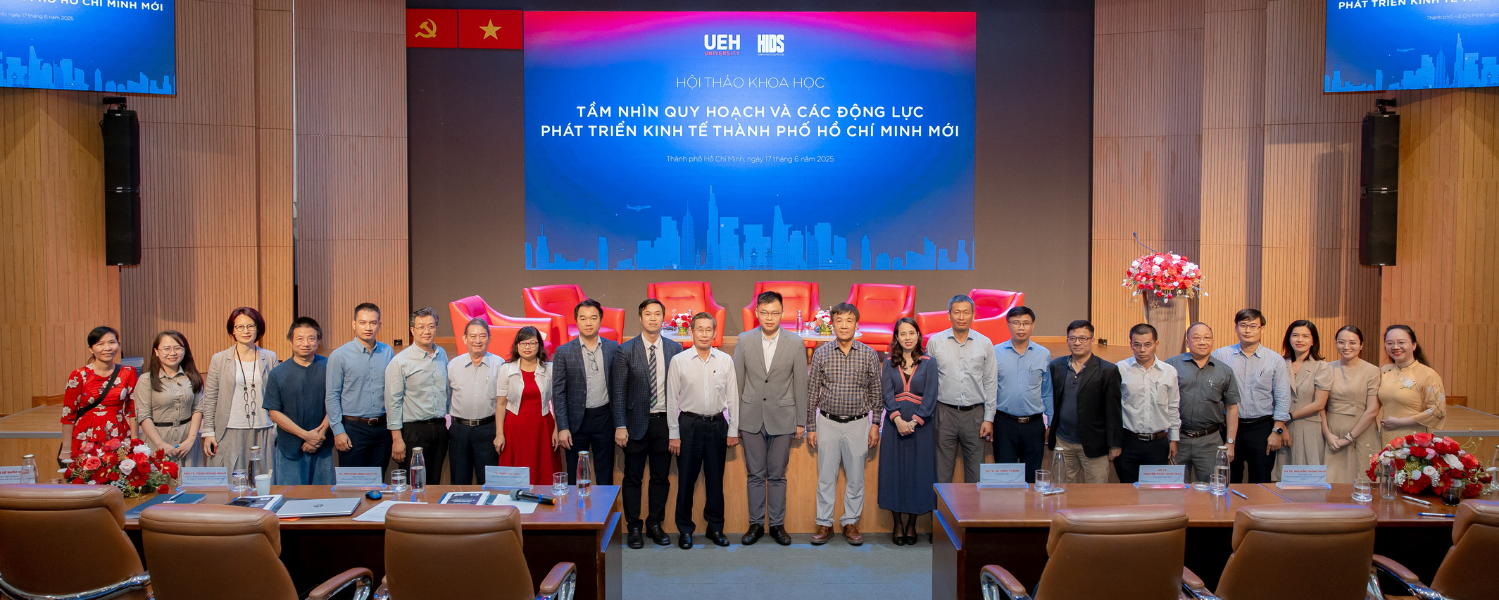
Scientific conference: “Planning Vision and Economic Development Drivers of the New Ho Chi Minh City”
19 Jun, 2025
The event took place as Central Party Resolution 60-NQ/TW on reorganising administrative units officially came into force, merging Ho Chi Minh City, Binh Duong Province and Ba Ria – Vung Tau Province into a new administrative unit – the New Ho Chi Minh City – with its political-administrative centre located in today’s Ho Chi Minh City.
This scientific forum gathered scholars, experts, managers and the business community to exchange and propose feasible solutions to build a New Ho Chi Minh City that is smarter, more connected, fairer and more sustainable. Conference outcomes will be compiled into proceedings for research and teaching reference and, simultaneously, the recommendations will be sent to the HCMC People’s Committee to contribute substantively to policy-making and planning for the New Ho Chi Minh City.
Attending the program, among the guests were: Mr. Kwon Tae Han – Deputy Consul General of the Republic of Korea; Dr. Architect Le Quoc Hung – Deputy Director, National Institute of Urban and Rural Planning; Dr. Tran Du Lich – Chairman, Advisory Council for Resolution 98; along with representatives of Departments/Boards/Agencies, research institutes, associations, businesses, and universities in Ho Chi Minh City.
From the Ho Chi Minh City Institute for Development Studies, there was Dr. Truong Minh Huy Vu – Director; MSc. Vu Chi Kien – Deputy Director. From UEH, there was Prof. Dr. Su Dinh Thanh – President of UEH; Prof. Dr. Nguyen Khac Quoc Bao – Vice President of UEH; Assoc. Prof. Dr. Nguyen Phong Nguyen – Standing Deputy Head, Department of Research – Development and Global Engagement; MSc. Vo Duc Hoang Vu – Deputy Head, Department of Research – Development and Global Engagement; Prof. Dr. Nguyen Trong Hoai – Editor-in-Chief, Journal of Asian Business and Economic Studies; Assoc. Prof. Dr. Trinh Tu Anh – Dean, Institute of Smart City and Management, UEH; and leaders of functional units, faculties/institutes, lecturers, and researchers interested in the event.
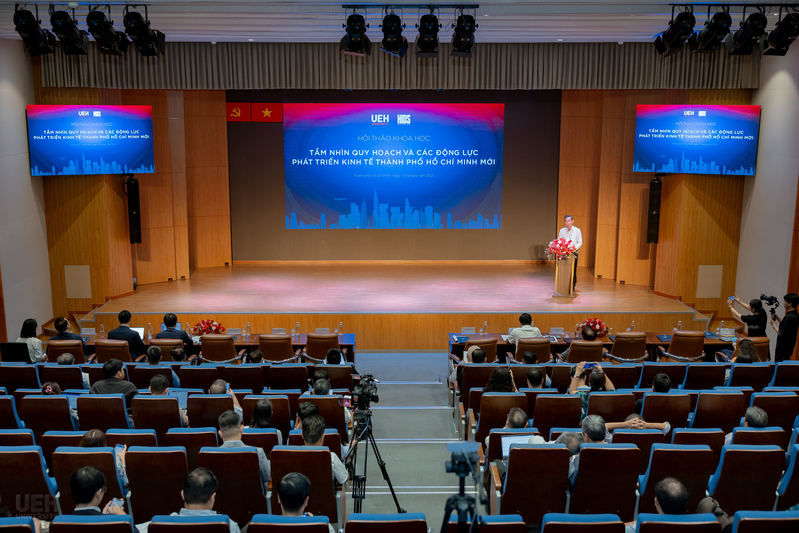
Panoramic View of the Conference
Opening the conference, Prof. Dr. Su Dinh Thanh – President of UEH emphasized: “This conference marks the starting point for many collaborative research programs, policy dialogues, and regular academic forums, aiming to enhance the quality of planning and socio-economic development strategies for Ho Chi Minh City and the Southern Key Economic Region. The University of Economics Ho Chi Minh City is committed to accompanying the City Government and research – policy-making agencies, especially the Ho Chi Minh City Institute for Development Studies, in providing scientific arguments and intellectual resources to support the planning, construction, and operation of New Ho Chi Minh City towards a modern, green, creative, and livable direction.”
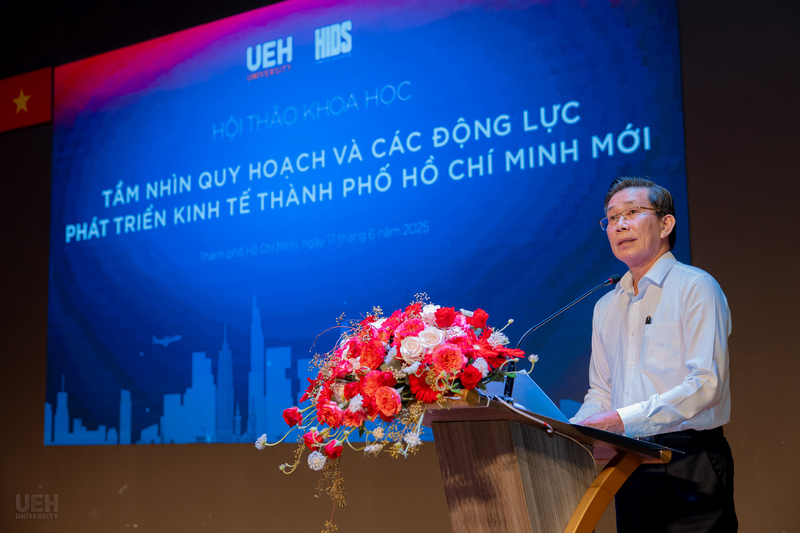
Prof. Dr. Su Dinh Thanh – President of UEH delivering the opening speech
Aiming for successful planning of New Ho Chi Minh City, the conference featured presentations and recommendations from experts regarding the planning process to identify the main economic development drivers of New Ho Chi Minh City, along with an approach that places people and the living environment at the center, promotes community participation, and strengthens the co-creation model among the State – University/Research Institute – Business – Community – Natural Environment.
During the conference, five presentations were delivered by experts, including:
1. Dr. Le Quoc Hung – Deputy Director, National Institute of Urban and Rural Planning, Ministry of Construction: “Ho Chi Minh City Mega-Urban Area: Strategic Imperatives for Integrated Planning, Urban Development, and Governance in the National Digital Transformation Era”;
2. Prof. Dr. Nguyen Trong Hoai – Editor-in-Chief, Journal of Asian Business and Economic Studies: “Ho Chi Minh City: New Drivers for Enhancing Aggregate Productivity towards a Global City”;
3. Dr. Nguyen Ngoc Hieu – Lecturer, Vietnamese-German University: “Discussing the Strategy for Transforming Ho Chi Minh City’s Central Business District (CBD) from the Perspective of Five Major Financial Centers in Asia”;
4. Assoc. Prof. Dr. Trinh Tu Anh – Dean, Institute of Smart City and Management, University of Economics Ho Chi Minh City: “Co-creation Platform: Redefining Approaches to Promote Collaboration in Smart City Development Projects – Proposals for Ho Chi Minh City”;
5. Dr. Le Bao Son – Ho Chi Minh City Institute for Development Studies: “Assessment of Water Supply Infrastructure Planning, Wastewater Collection and Treatment Infrastructure, and Solid Waste Collection and Treatment Infrastructure in the Context of New Ho Chi Minh City.”
New Thinking for Planning New Ho Chi Minh City – Co-creation Platform among the State – University/Research Institute – Business – Community – Natural Environment
New Ho Chi Minh City is not merely an expansion of administrative boundaries, but is also expected to become a smart, modern mega-urban area, with a multi-centered spatial structure, integrated infrastructure, smart logistics, digital economy, and green economy as key development pillars.
The presentations within the conference framework opened up foundational perspectives for building New Ho Chi Minh City towards a multi-centered and integrated region. Experts affirmed that expanding administrative boundaries alone is insufficient; the crucial point is to restructure urban space towards a multi-centered model, creating new growth poles while promoting close connectivity with neighboring regions. This approach surpasses traditional planning thinking, which is limited by administrative boundaries, and instead advocates for a flexible, multi-layered regional governance model that adapts to modern development contexts.
The planning of New Ho Chi Minh City must be based on practical data, with a holistic view of the economy, society, infrastructure, and regional connectivity from all three localities: Ho Chi Minh City, Binh Duong, and Ba Ria – Vung Tau. This will allow for precise identification of the roles and functions of each sub-region to develop feasible plans aligned with development drivers.
Particularly, a new governance institution with pilot, flexible, and consensus-based mechanisms is a prerequisite for realizing this planning model. Only when planning is linked with institutional innovation can Ho Chi Minh City fully realize its potential, creating a smart, modern, and sustainable urban space.
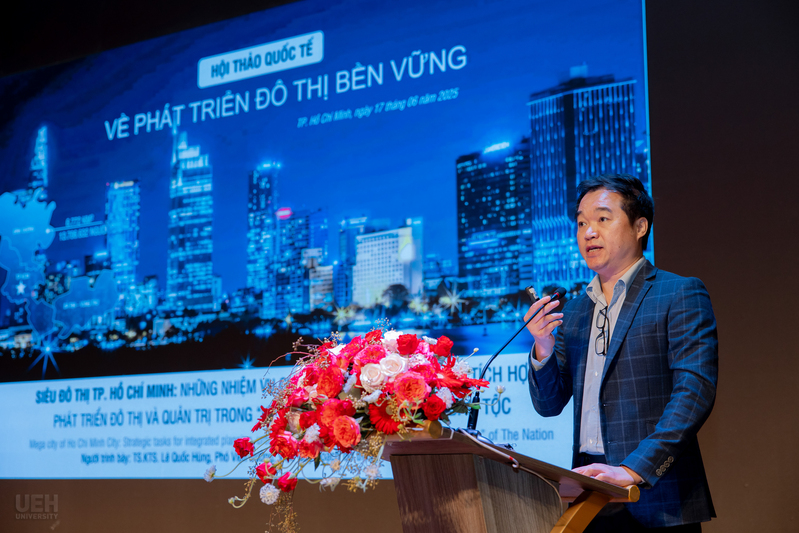
Dr. Le Quoc Hung – Deputy Director, National Institute of Urban and Rural Planning, Ministry of Construction, presenting: “Ho Chi Minh City Mega-Urban Area: Strategic Imperatives for Integrated Planning, Urban Development, and Governance in the National Digital Transformation Era”
Identifying New Growth Drivers
New Ho Chi Minh City requires breakthrough growth drivers, notably the development of wind power industry clusters, the construction of a modern logistics ecosystem, and the promotion of innovation. These drivers must be synchronously supported by both physical and digital infrastructure, laying the foundation for green growth and the digital economy.
Notably, Ho Chi Minh City, Binh Duong, and Ba Ria – Vung Tau currently account for nearly 50% of the country’s private enterprises. Therefore, removing institutional, land, and capital barriers for the private sector is a prerequisite to unlocking resources.
Simultaneously, New Ho Chi Minh City needs to create a genuine innovation ecosystem, including a legal sandbox, technology testing spaces, interdisciplinary innovation centers, and a tightly connected model between universities and businesses, to foster an environment conducive to the development and commercialization of creative ideas.
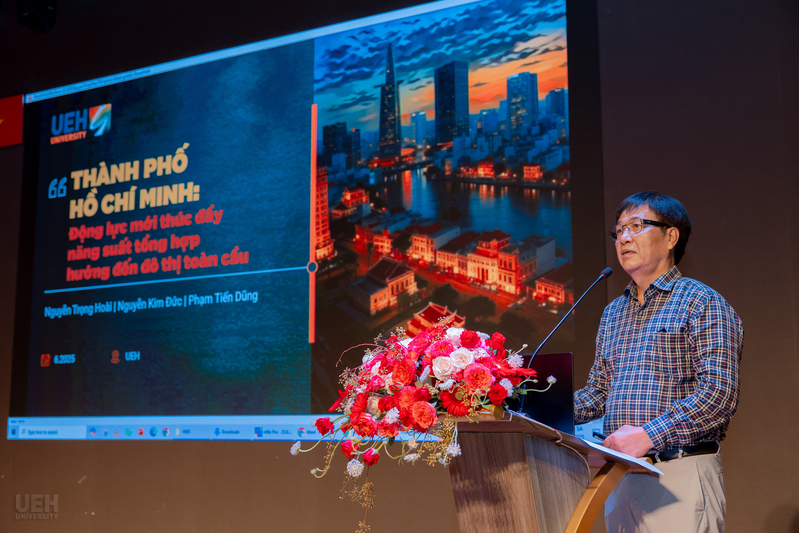
Prof. Dr. Nguyen Trong Hoai – Editor-in-Chief, Journal of Asian Business and Economic Studies, presenting: “Ho Chi Minh City: New Drivers for Enhancing Aggregate Productivity towards a Global City”
A New Development Model
For New Ho Chi Minh City to develop sustainably and maintain its role as an economic locomotive, resolving supply chain bottlenecks is an urgent requirement. The city must invest heavily in inland container depot (ICD) systems, develop digital logistics, and build a multimodal port network connecting the inner city to key economic zones.
Expanding towards the sea, particularly leveraging the potential of the Cai Mep – Thi Vai area, will enable Ho Chi Minh City to become a marine logistics center, an energy hub, an industrial port, and a major river tourism destination.
At the same time, Ho Chi Minh City should aim to build a Central Business District (CBD) linked to the International Financial Center (IFC) model, drawing lessons from global cities such as Tokyo, Singapore, and Kuala Lumpur. This requires the synchronous development of service ecosystems, transportation infrastructure, housing, and quality of life to form a modern financial center capable of competing regionally and internationally.
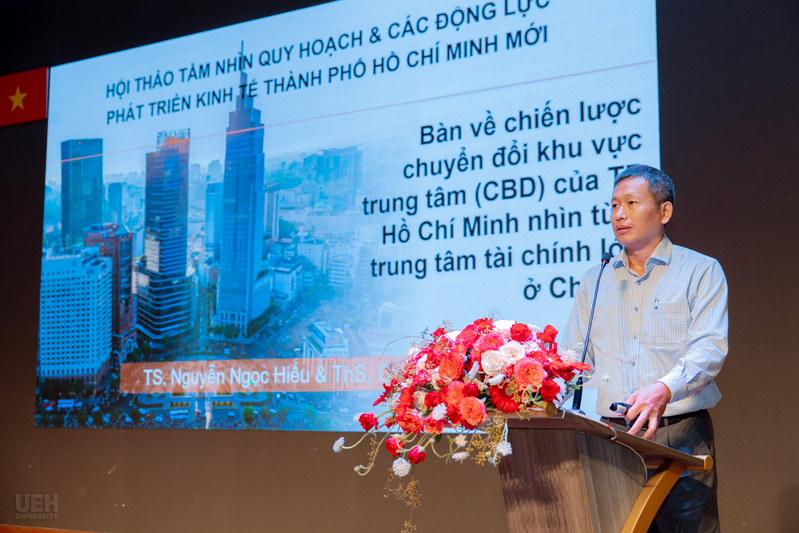
Presentation: “Discussing the Strategy for Transforming Ho Chi Minh City’s Central Business District (CBD) from the Perspective of Five Major Financial Centers in Asia” by Dr. Nguyen Ngoc Hieu – Lecturer, Vietnamese-German University
Promoting the City University Model
The “City University” model is a practical development trend in which the university becomes an essential part of the urban structure and dynamics. The university is not separate from society but acts and innovates together with the city.
In this context, the University of Economics Ho Chi Minh City (UEH) defines its role not only as a place for training and research but also as a partner accompanying the city in planning, institutional reform, promoting innovation, and green transformation. UEH operates according to the Quintuple Helix model – linking five components: Academia – Business – Society – Government – Natural Environment, and pursues the philosophy of Value Co-creation in Sustainable Innovative Urban Development. This is a modern interdisciplinary approach, opening up genuine cooperation spaces among stakeholders and directly contributing to shaping New Ho Chi Minh City.
Moreover, innovation cannot be confined to laboratories; it must spread into living and working spaces, connecting communities. Innovation Districts should be planned as vibrant ecosystems, integrating academic, creative, residential, and socio-economic development elements, rather than being limited to isolated technology parks.
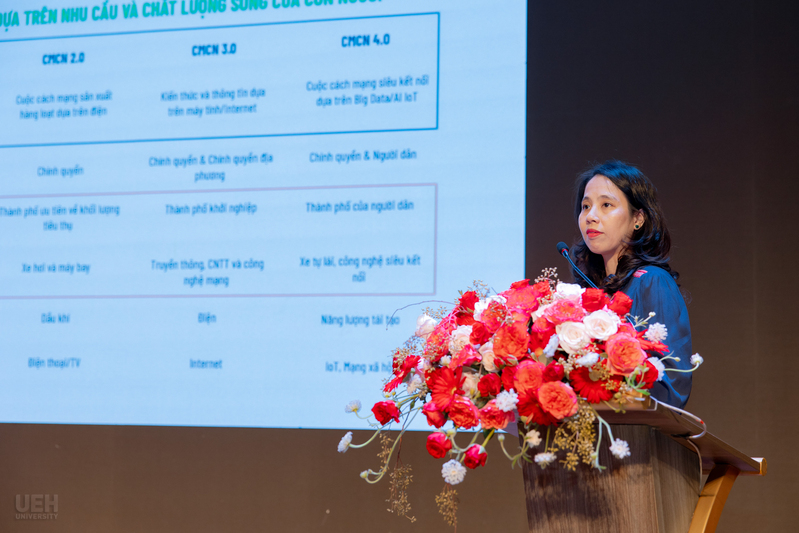
Assoc. Prof. Dr. Trinh Tu Anh – Dean, Institute of Smart City and Management, University of Economics Ho Chi Minh City, sharing about the City University model through the presentation: “Co-creation Platform: Redefining Approaches to Promote Collaboration in Smart City Development Projects – Proposals for Ho Chi Minh City”
The conference presentations and ongoing research series by HIDS and UEH are focused on addressing core issues in the planning and development of New Ho Chi Minh City, covering fields such as urban planning, logistics, digital economy, green economy, international finance, and innovation.
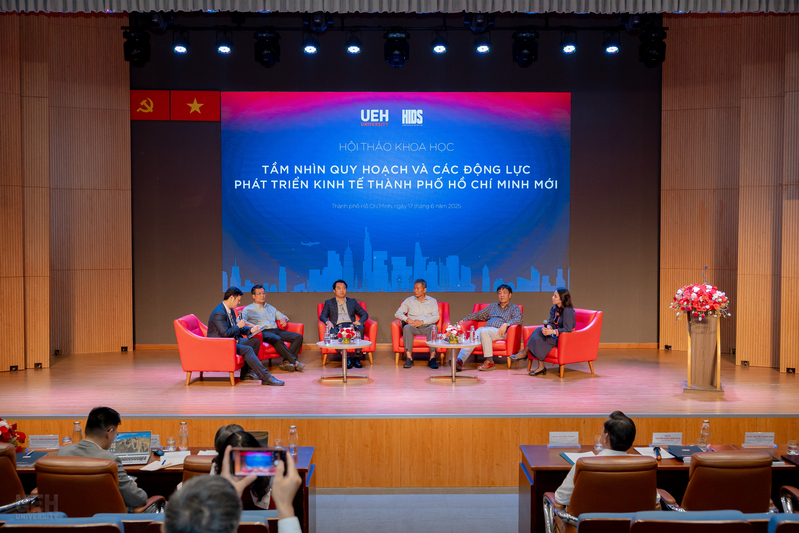
Discussion Session at the Conference
The success of the conference and the spirit of multi-stakeholder cooperation among the State – University/Research Institute – Business – Community – Natural Environment represent a strategic starting point for jointly shaping a New Ho Chi Minh City – smarter, more connected, fairer, and more sustainable – worthy of its role as the nation’s leading urban center in the new era.
Some other photos from the conference:
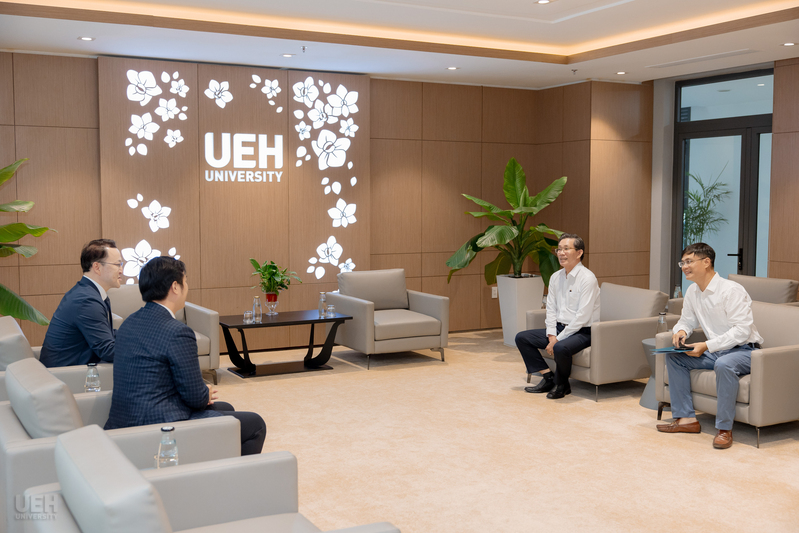
Welcoming delegates at the UEH Reception Hall
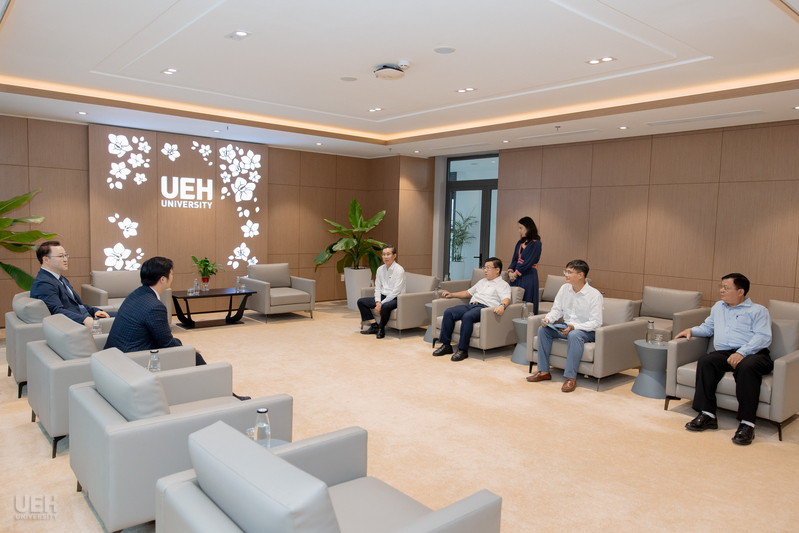
Delegates contributing and discussing at the program
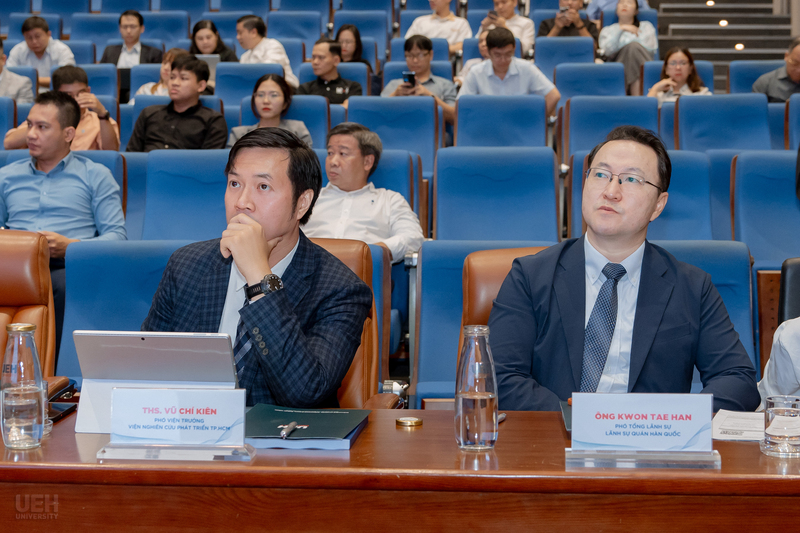
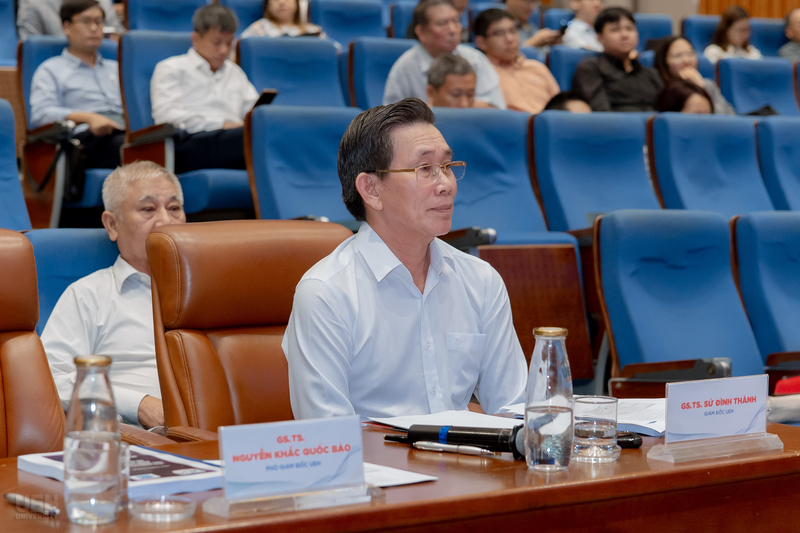

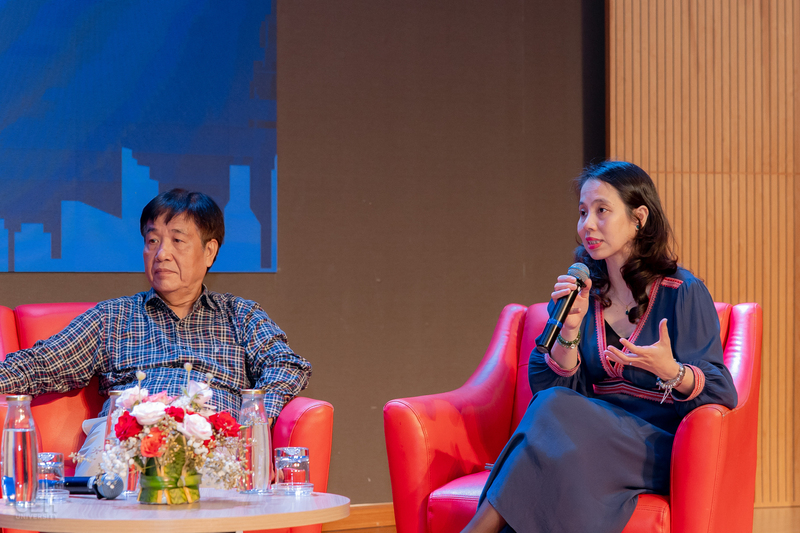
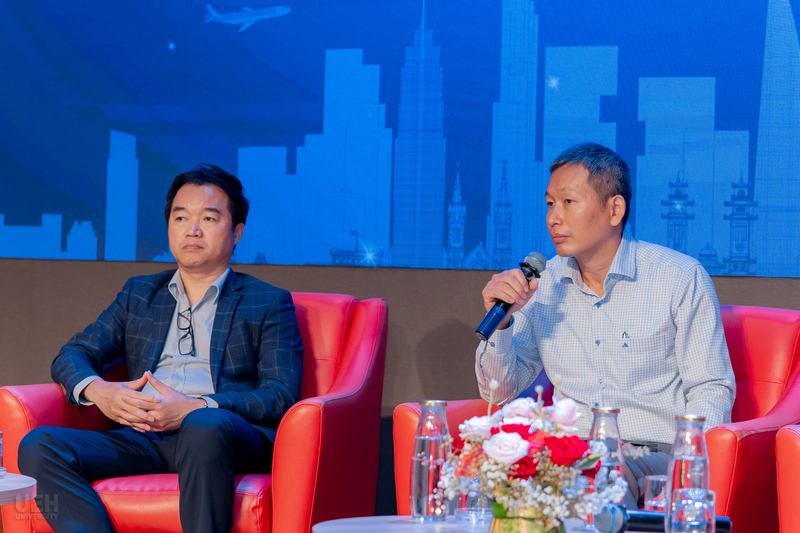
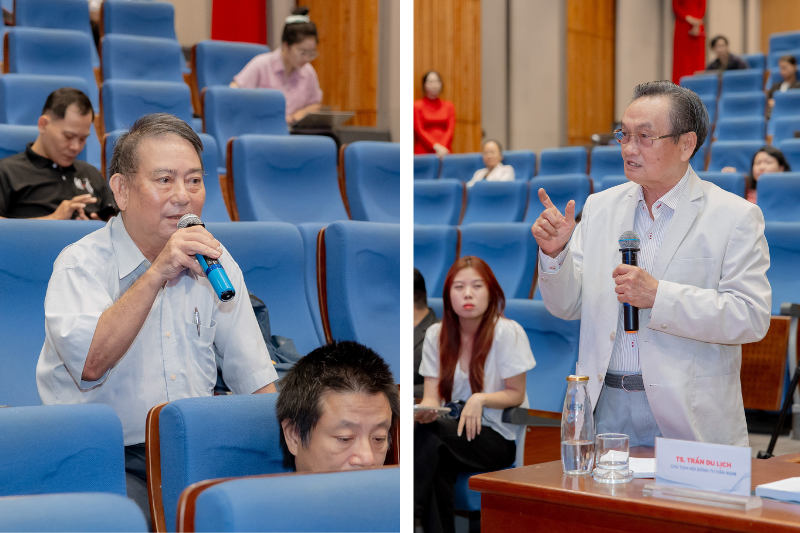
Delegates contributing and discussing at the program
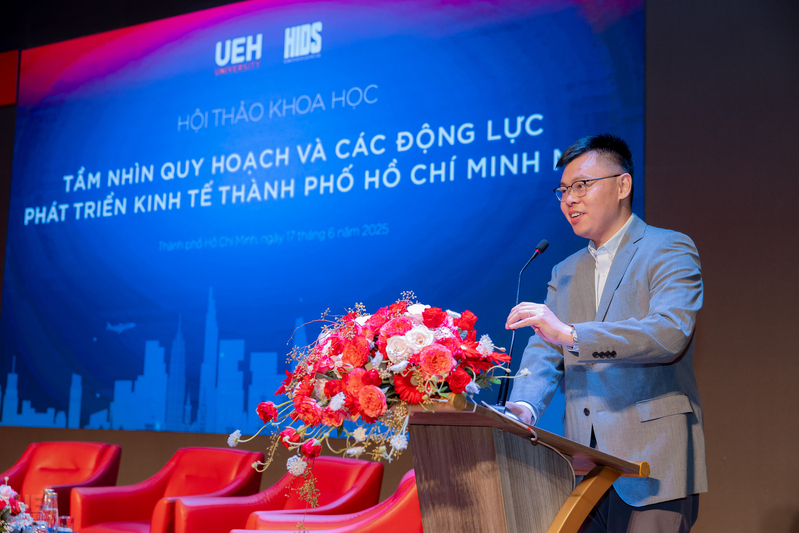
Dr. Truong Minh Huy Vu – Director of Ho Chi Minh City Institute for Development Studies delivering the closing and summary speech of the conference
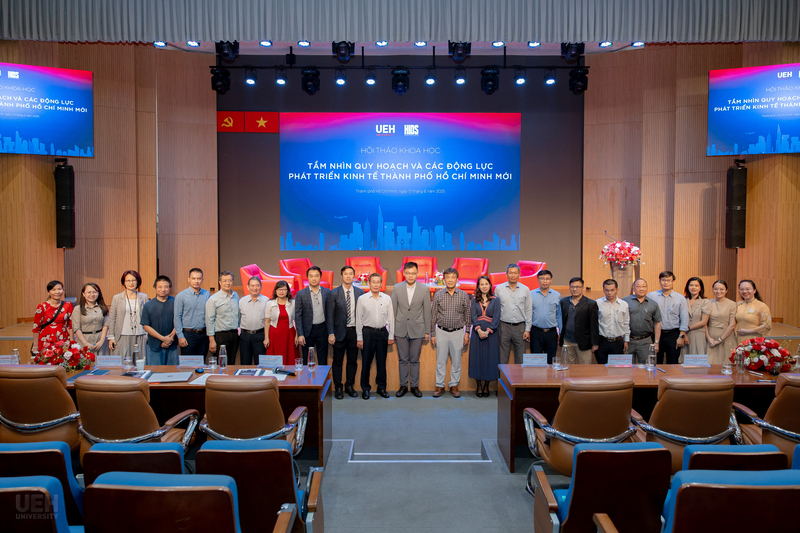
Delegates taking commemorative photos
Pillar: Research, Community Engagement
Project: UEH Connecting
News, photos: UEH Department of Communications and Partnerships, Conference Organizing Committee

